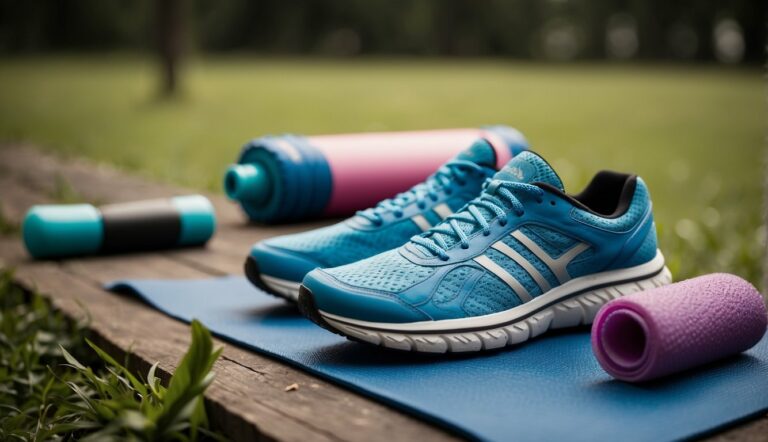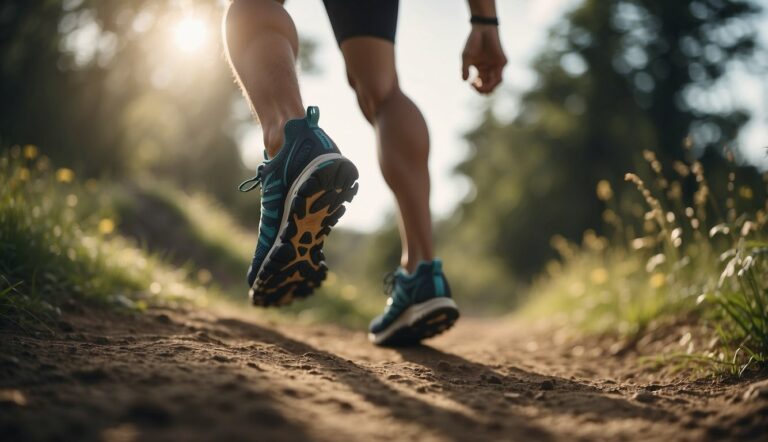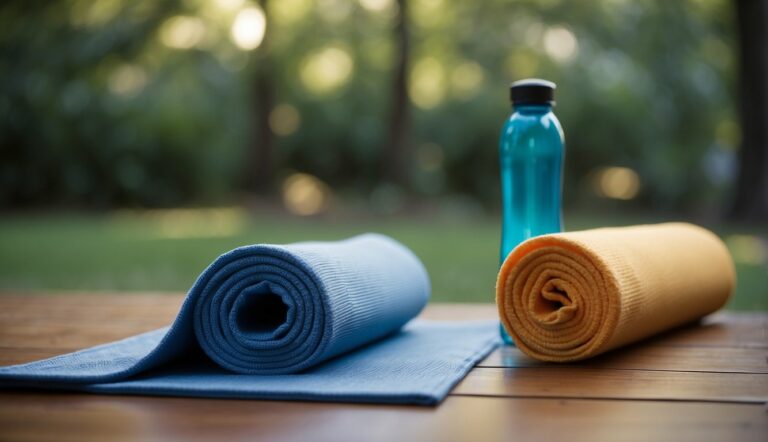Best Post-Run Stretches for Flexibility (Quick Routine for Runners)
As a UESCA certified running coach, I understand the importance of post-run stretching for runners seeking to enhance their flexibility and speed up recovery.
Stretching after a run is crucial as it helps to alleviate muscle tightness and can improve overall flexibility, which in turn may reduce the risk of injuries. From my experience, runners who include a stretching routine in their post-run recovery tend to report fewer aches and a more pleasant running experience.
When advising on post-run stretches, I emphasize simplicity and effectiveness. Stretches should target key areas that are typically stressed during running, such as the hamstrings, quadriceps, calves, and hip flexors. Holding each stretch for at least 30 seconds permits muscles to relax and elongate, ultimately contributing to better flexibility and a smoother running gait.
Regularly integrating a variety of these stretches after running can aid in maintaining a balanced body and promoting optimal muscle recovery.
The Best Post-Run Stretch Routine for Runners To Promote Flexibility
Here is a great post-run stretching routine that you can complete in about 10-15 minutes:
- Toe Touch Stretch: Stand with your feet hip-width apart and slowly bend forward at the hips, keeping your legs straight. Reach down towards your toes with your hands and relax your head and neck. Hold this position to stretch your hamstrings and lower back. Make sure to keep your spine straight and avoid rounding your back.
- Standing Quadriceps Stretch: Stand on one leg, using a wall or chair for balance if needed. Bend your other leg back and grasp your ankle with your hand, pulling it towards your buttock. Keep your knees together and push your hip forward to enhance the stretch in the front of your thigh. Hold the stretch, then switch to the other leg.
- Hamstring Stretch: Sit on the ground with one leg extended straight in front of you and the other leg bent with the foot flat against the opposite inner thigh. Lean forward from the hips over the extended leg, reaching towards your foot. Hold the stretch to target the hamstrings of the extended leg.
- Prone Hamstring Stretch: Lie flat on your stomach and use a towel or strap to assist in pulling one leg up behind you while keeping both hips on the ground. This stretch targets the hamstrings and can also help with lower back flexibility.
- Hip Flexor Stretch: Kneel on one knee with the other foot in front, forming a 90-degree angle with both knees. Shift your weight forward, pushing your hips towards the ground. You should feel a stretch in the front of the hip of the back leg. Keep your upper body straight and avoid arching your back.
- IT Band Stretch: Stand and cross one leg behind the other. Extend your arm on the same side as the back leg over your head, then lean to the opposite side, creating a line of stretch from your hip to your fingertips. This stretch targets the iliotibial band running along the outer thigh.
- Outer Hip Stretch: Lie on your back and cross one ankle over the opposite knee. Gently pull the uncrossed leg towards your chest until you feel a stretch in the outer hip of the crossed leg. This stretch is excellent for the glutes and outer hip muscles.
- Butt Kicks: Perform this as a dynamic stretch by standing in place and gently kicking your heels up towards your glutes, alternating legs. This helps to loosen up the quadriceps and gets more blood flowing to the muscles after a run.
- Heel Lifts: Stand on the edge of a step or curb with your heels hanging off and slowly lower them down below the level of the step to stretch your calf muscles. Hold the position for a moment before lifting back up to the starting position.
- Leg Swings: Stand and hold onto a stable object for support. Swing one leg forward and back, keeping it straight, to loosen up the hamstrings and hip flexors. Then, swing the same leg side to side in front of your body to stretch the inner and outer thighs.
For each stretch, aim to hold for about 30 seconds and repeat 2-3 times per side. Ensure you’re breathing steadily throughout the routine and make adjustments to the duration or repetitions based on your comfort level and flexibility.
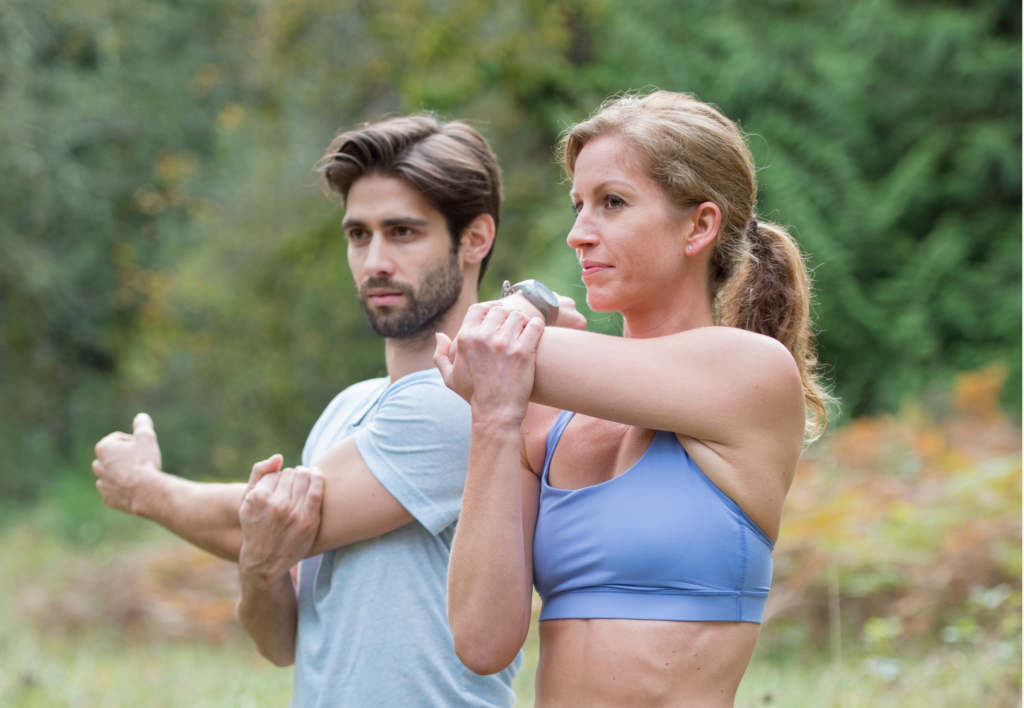
Focusing on Lower Body Stretching Techniques
Properly executed stretches after running can significantly reduce muscle soreness and improve flexibility. In this section, I’ll guide you through targeted lower body stretches that focus on the key muscle groups affected by running: the hamstrings, calves, quads, and hip flexors.
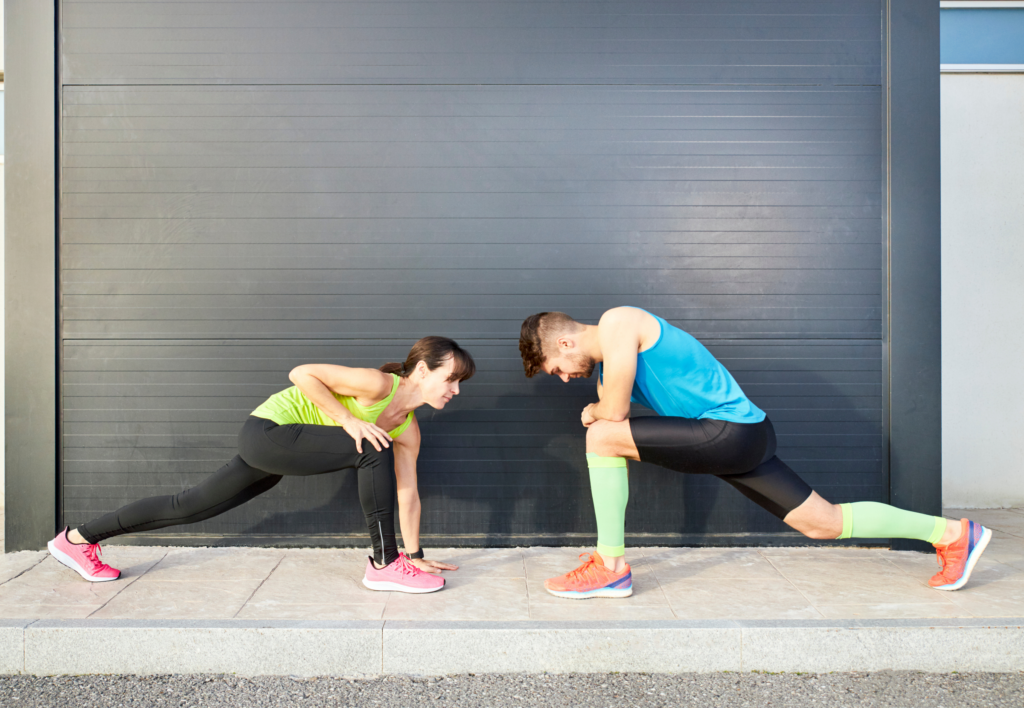
Hamstrings and Calves Focus
Hamstring Stretch: Sit on the ground with your legs extended forward. Hinge at the hips and reach towards your toes, keeping your back straight. You should feel a stretch along the back of your thighs. Hold for 30 seconds.
| Stretch | Target Muscle Group | Duration | Notes |
|---|---|---|---|
| Seated Hamstring Stretch | Hamstrings | 30 seconds | Keep back straight, reach toward toes. |
| Standing Calf Stretch | Calves | 30 seconds per side | Press against a wall, one foot back, heel down. |
Calf Stretch: Stand facing a wall with one foot in front of the other. Press the rear foot’s heel to the ground and lean forward towards the wall, feeling a stretch in the lower leg of your extended foot. Hold for 30 seconds on each side.
Quads and Hip Flexors Emphasis
Low Lunge Stretch: Step one foot forward into a lunge and lower your back knee to the ground. Lean into the lunge, keeping your upper body straight to stretch the hip flexors of the back leg. Hold for 30 seconds on each side.
Lying Side Quad Stretch: Lie on one side, grab your top ankle, and pull your heel towards your glute. Keep your knees together and push your hips forward to feel the stretch in the front of the thigh. Hold for 30 seconds per side.
| Stretch | Target Muscle Group | Duration | Notes |
|---|---|---|---|
| Low Lunge Stretch | Hip Flexors | 30 seconds per side | Keep back knee on the ground. |
| Lying Side Quad Stretch | Quads | 30 seconds per side | Lie on side, pull heel to glute. |
Incorporating these stretches into your post-run routine can help alleviate muscle tension and promote muscle recovery. Remember to breathe deeply and consistently as you hold each stretch to maximize the benefits.
Focusing on Upper Body and Core Recovery
After a run, it’s crucial to stretch the upper body and core to prevent tightness and promote flexibility. Focusing on these areas can improve posture, breathing, and running efficiency.
Back and Chest Stretches
To maintain a strong and balanced upper body, I recommend incorporating a spinal twist and a back stretch into your routine. These stretches target your back muscles and can help prevent post-run tightness.
- Spinal Twist: Sit on the ground with legs extended. Cross your right foot over the outside of your left thigh. Bend your left knee, keeping your right knee pointed towards the ceiling. Place your left elbow on the outside of your right knee and twist to the right, holding for 15-30 seconds before switching sides.
- Back Stretch: Stand with your feet hip-width apart and link your hands behind your back. Straighten your arms and lift your hands slightly, opening up your chest and holding the stretch for 15-30 seconds.
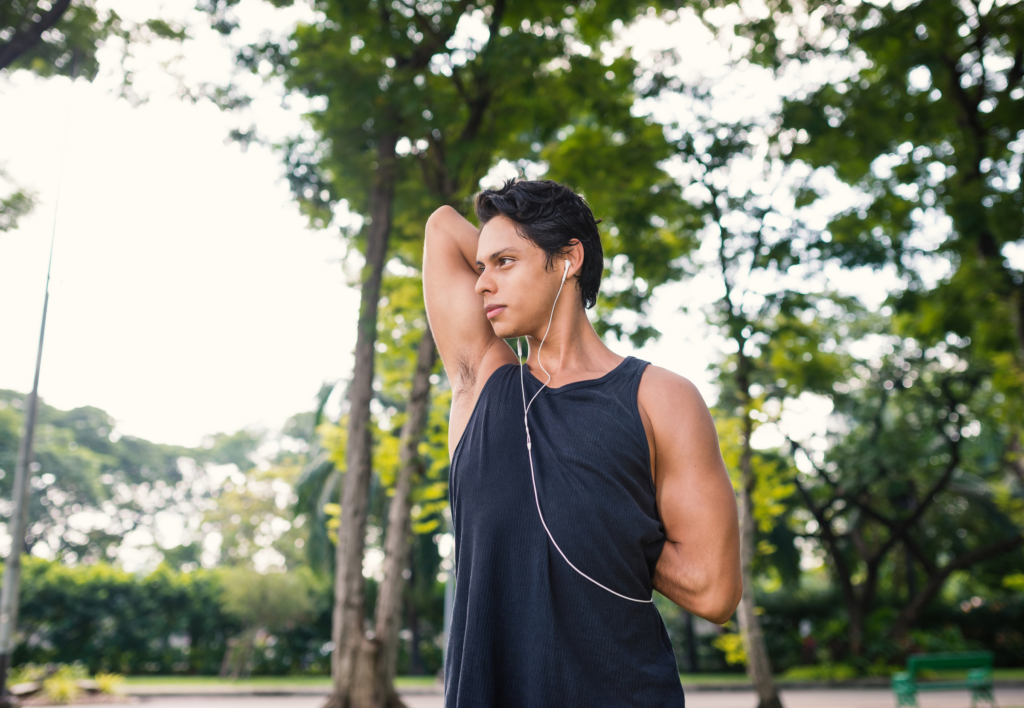
Shoulders and Arms Stretches
Stretching the shoulders and arms is essential for relieving tension and maintaining muscle balance and flexibility.
- Triceps Stretch: Raise your right arm, bend it so that your hand reaches toward the opposite side, and use your left hand to gently press on your right elbow. Hold for 15-30 seconds and then switch arms.
- Arm and Abs Stretch: Extend your arms overhead, clasping your hands together. With a straight back, lean slightly to the right to stretch your left side, hold for 15 seconds, then lean to the left to stretch your right side, holding for another 15 seconds.
By incorporating these stretches into your post-run routine, you’ll help release muscle tension in the upper body and core, assisting with recovery and your overall running performance.
Fundamentals of Post-Running Stretches – Does it Help Flexibility?
After a run, it’s crucial to stretch to maintain flexibility and prevent tightness. I focus on ensuring that these stretches aid recovery and enhance subsequent performance.
Importance of Stretching for Flexibility
Flexibility is vital for runners since it contributes to smoother, more efficient movement patterns and reduces the risk of injury. My post-run stretching routine often includes static stretches, which involve holding a position for an extended period, typically 30 to 60 seconds.
Key static stretches like the calf stretch, hamstring stretch, and quad stretch target muscles that are typically tight in runners. Regularly performing these stretches can alleviate tension and muscle soreness, thus promoting quicker recovery.
- Calf Stretch: Essential for preventing tightness in the lower legs.
- Hamstring Stretch: Key for maintaining flexibility in the back of the thigh.
- Quad Stretch: Aids in keeping the front of the thigh limber.
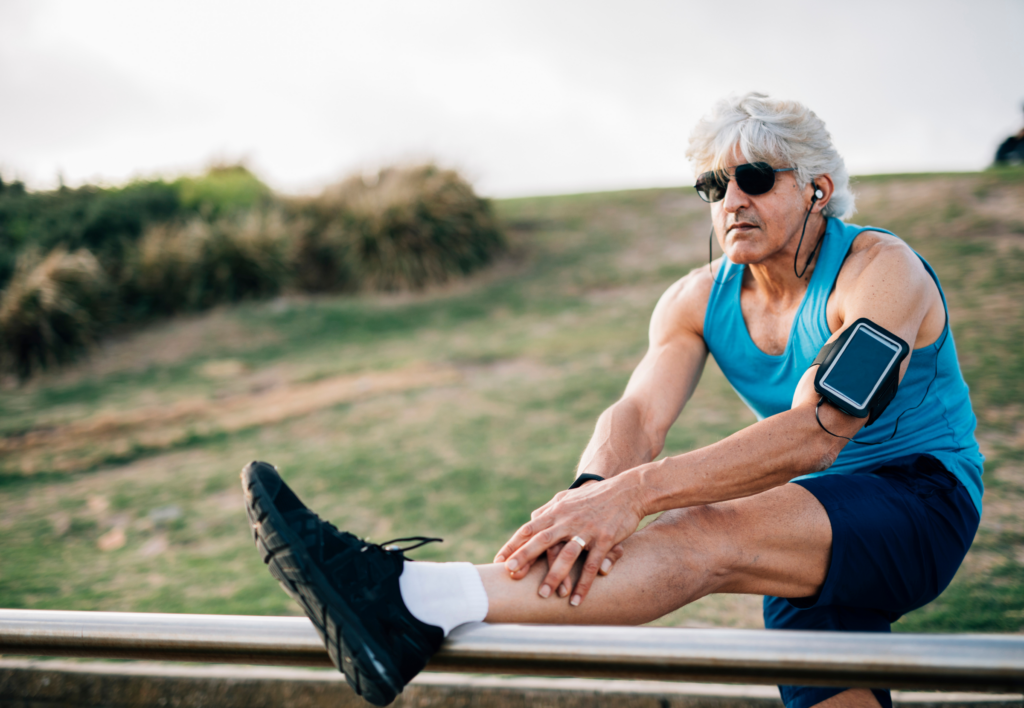
Types of Stretches: Static vs Dynamic
Static stretches come into play primarily during the cooldown phase after a run. In my practice, this is the best time to enhance flexibility and help muscles relax after the stress of a run.
On the other hand, dynamic stretching involves movement-based stretches that I typically recommend during a warm-up or as a part of an active recovery day. These stretches prepare the muscles for movement by increasing range of motion and performance, and they’re not usually held for a long period, unlike static stretches.
| Stretch Type | Purpose | Example |
|---|---|---|
| Static Stretch | Improve flexibility, alleviate post-run tightness | Hamstring stretch |
| Dynamic Stretch | Increase range of motion, prepare for activity | Leg swings |
Incorporating both static and dynamic stretches can produce complementary benefits that enhance overall running efficiency and help safeguard against injuries.
Post-Run Stretching for Injury Prevention and Care
Post-run stretches are integral for preventing injuries and ensuring the care of your muscles after a run. I’m here to guide you through managing common injuries and reducing muscle tension, each playing a crucial role in keeping you running healthily and happily.
Managing Common Running-related Injuries
In my experience as a UESCA certified running coach, I find that runners often face issues like shin splints and IT band syndrome. To address these, listening to your body is critical.
If you notice sharp pains or discomfort, it’s important to:
- Rest the affected area and apply ice to reduce swelling.
- Use a foam roller for self-myofascial release.
- Consult a physiotherapist for personalized care.
| Injury | Initial Care | Additional Advice |
|---|---|---|
| Shin Splints | Rest and ice. | Mid-run calf stretches can help. |
| IT Band Syndrome | Reduce mileage; foam rolling | Strengthening hip and glute muscles. |
Remember, cramping or sharp pains should not be ignored, as they often signal that something more than just muscle soreness is at play.
Strategies to Reduce Muscle Tension
Muscle tension post-run can lead to discomfort and even injury if not managed properly. To reduce muscle tension:
- Gently stretch each major muscle group.
- Avoid overstretching – it should not be painful.
- Incorporate a foam roller for deep tissue relaxation.
Here’s a straightforward strategy I encourage:
- Identify: Feel which areas hold the most tension.
- Stretch: Hold each stretch for 30–60 seconds without bouncing.
- Roll: Spend 1–2 minutes on each tight muscle with a foam roller.
Employing these techniques consistently after runs will help in dealing with muscle tension and stress, and they can significantly decrease the risk of running-related injuries.
Optimizing Post-Run Stretches
After a run, it’s crucial to engage in a cooldown that includes post-run stretches to aid recovery and enhance performance. This can reduce muscle soreness and prepare your body for your next running session.
Incorporating Stretching into Your Routine
Properly timing your stretches is essential. Cooldown stretches should begin within 5 to 10 minutes post-run to capitalize on the heightened muscle temperature. Here’s a simple routine to follow after every run:
- Dynamic stretching for 5 minutes: gently mobilize muscles that have been heavily used during the run.
- Static stretches: hold each stretch for 30 to 60 seconds, targeting major muscle groups used in running.
Key Stretches to Include:
- Hamstring stretch
- Quad stretch
- Calf stretch
- Hip flexor stretch
- Glute stretch
Incorporate at least one stretch for each of these muscle groups into your post-run routine.
Listening to Your Body
When stretching, the focus should be on the areas of the body that feel particularly tight or sore. Listening to your body is paramount for effective recovery. Signs you should look out for:
- Tightness in specific muscles
- Discomfort or pain levels
Staying in tune with your body’s feedback and adjusting your stretching routine accordingly can help prevent injuries and improve coordination and running performance. Remember to breathe deeply to help activate the parasympathetic nervous system, which aids in relaxation and recovery.

